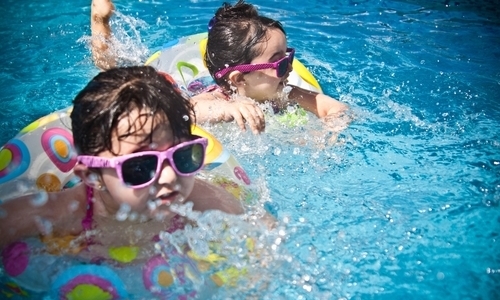Summer is a prime time for water parks, amusement parks and other attractions. Statista estimates that in the U.S. alone, amusement and theme parks generated around $20.5 billion in 2016, a number that is continuing to rise.
We’ve previously covered the amusement park industry, but there are a number of new developments in technology and other aspects of the industry that make it worth revisiting. With warm weather upon us, here are some areas to explore in your business coverage.
Guests with disabilities
Amusement parks and other must comply with the Americans with Disabilities Act, but Morgan’s Wonderland in San Antonio, Texas goes several steps beyond with accessible features like free admission for guests with special needs, Braille signage and waterproof chairs for guests in wheelchairs.
In addition, other parks are catering to guests with autism through features such as quiet rooms, noise-cancelling headphones and sensory-friendly bathrooms. Are any parks in your area doing this? What does it cost to implement these features?
Food and beverage service at parks
Guests may not give much thought to the hot dogs or popcorn they consume in between rides, but there’s likely a lot of logistical things happening behind the scenes. Are any local amusement parks getting more creative in their culinary offerings or sourcing ingredients locally? Just how much soda or cotton candy do guests consume in the course of a day or a week? Are local water parks eliminating plastic straws or taking other steps to boost sustainability?
Employment at parks
Although some have indoor arcades or other areas open year-round, outdoor parks tend to be seasonal, so who is staffing the attractions, flipping burgers or greeting guests? Are there seasonal employees who return year after year? What draws these loyal team members back each summer? Are high school and college kids getting their first taste of the work world? Where do local parks recruit staff and what are their staffing challenges? What perks do employees enjoy?
Tech trends at parks
A virtual reality “Star Wars” ride opened at Disney World earlier this year and Six Flag and Seaworld are also adding VR technology to some of its rides. How are smaller local attractions competing with the flashy, tech-enabled rides at the big marquee names? Are they holding adults-only nights or courting corporate events to attract a crowd other than families? What upgrades are they make to their own rides?
Reporter’s Takeaway
- Several trade groups including the International Association of Amusement Parks and Attractions (IAAPA), the International Association of Trampoline Parks (IATP) and the National Association of Amusement Ride Safety Officials (NAARSO) serve this space. (Full disclosure: This writer has written two features for IAAPA’s industry magazine, Funworld.)
- Theme Park City has a state-by-state listing of U.S. theme parks, amusement parks, water parks and zoos that could help you pinpoint attractions in your area.











